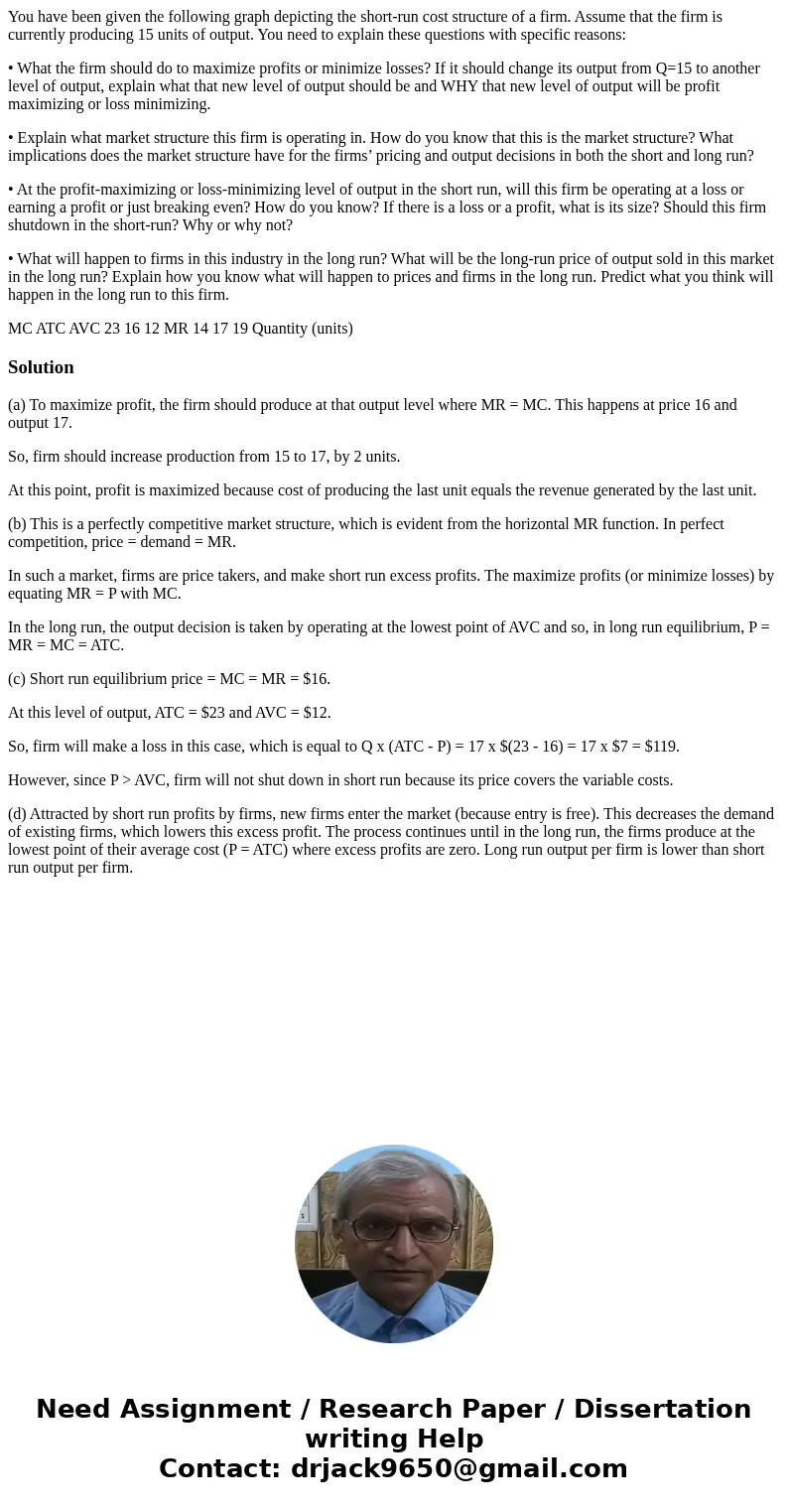You have been given the following graph depicting the shortr
You have been given the following graph depicting the short-run cost structure of a firm. Assume that the firm is currently producing 15 units of output. You need to explain these questions with specific reasons:
• What the firm should do to maximize profits or minimize losses? If it should change its output from Q=15 to another level of output, explain what that new level of output should be and WHY that new level of output will be profit maximizing or loss minimizing.
• Explain what market structure this firm is operating in. How do you know that this is the market structure? What implications does the market structure have for the firms’ pricing and output decisions in both the short and long run?
• At the profit-maximizing or loss-minimizing level of output in the short run, will this firm be operating at a loss or earning a profit or just breaking even? How do you know? If there is a loss or a profit, what is its size? Should this firm shutdown in the short-run? Why or why not?
• What will happen to firms in this industry in the long run? What will be the long-run price of output sold in this market in the long run? Explain how you know what will happen to prices and firms in the long run. Predict what you think will happen in the long run to this firm.
MC ATC AVC 23 16 12 MR 14 17 19 Quantity (units)Solution
(a) To maximize profit, the firm should produce at that output level where MR = MC. This happens at price 16 and output 17.
So, firm should increase production from 15 to 17, by 2 units.
At this point, profit is maximized because cost of producing the last unit equals the revenue generated by the last unit.
(b) This is a perfectly competitive market structure, which is evident from the horizontal MR function. In perfect competition, price = demand = MR.
In such a market, firms are price takers, and make short run excess profits. The maximize profits (or minimize losses) by equating MR = P with MC.
In the long run, the output decision is taken by operating at the lowest point of AVC and so, in long run equilibrium, P = MR = MC = ATC.
(c) Short run equilibrium price = MC = MR = $16.
At this level of output, ATC = $23 and AVC = $12.
So, firm will make a loss in this case, which is equal to Q x (ATC - P) = 17 x $(23 - 16) = 17 x $7 = $119.
However, since P > AVC, firm will not shut down in short run because its price covers the variable costs.
(d) Attracted by short run profits by firms, new firms enter the market (because entry is free). This decreases the demand of existing firms, which lowers this excess profit. The process continues until in the long run, the firms produce at the lowest point of their average cost (P = ATC) where excess profits are zero. Long run output per firm is lower than short run output per firm.

 Homework Sourse
Homework Sourse